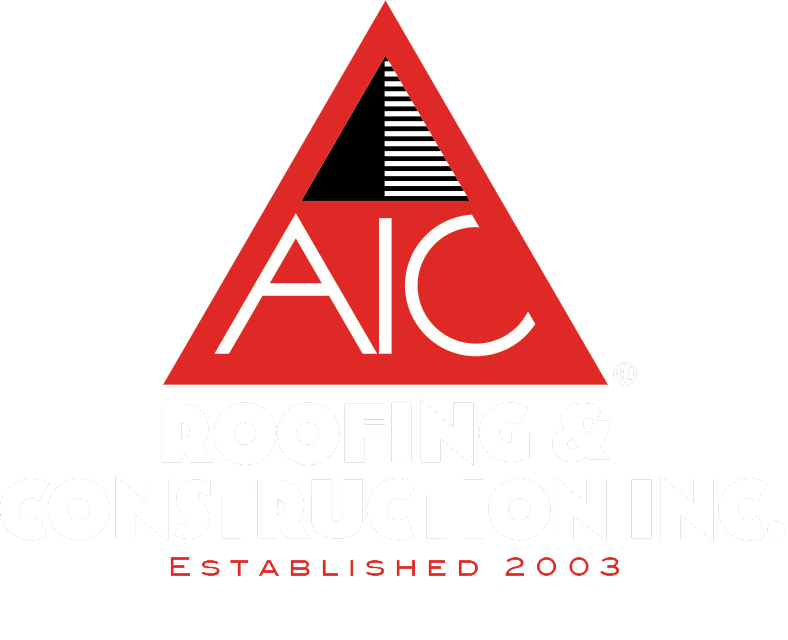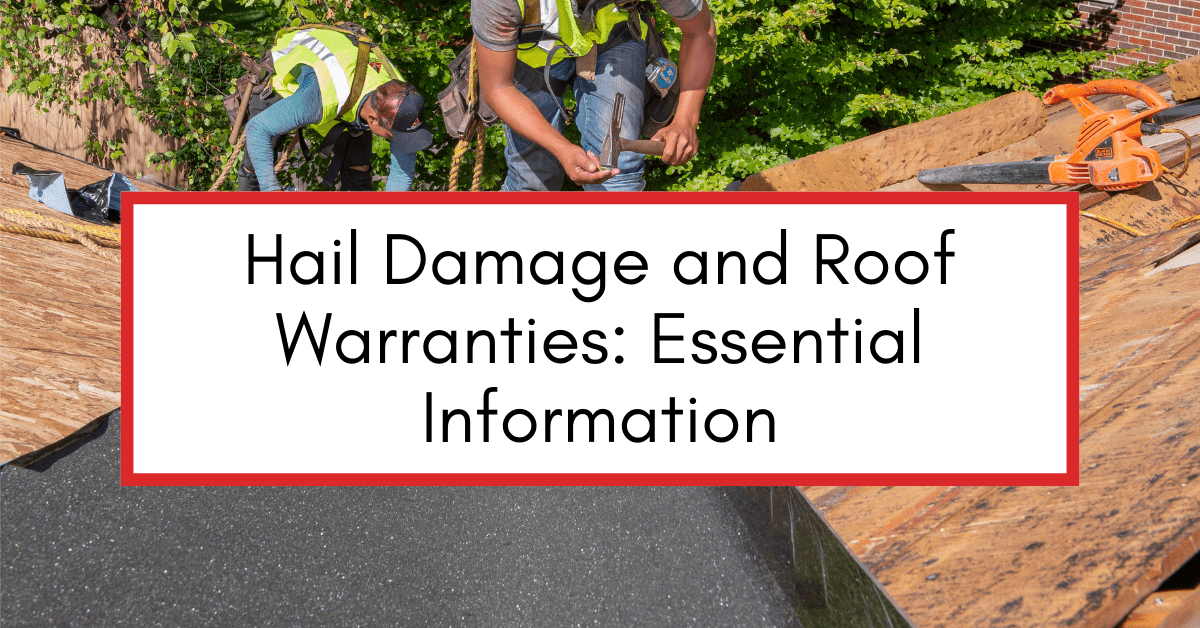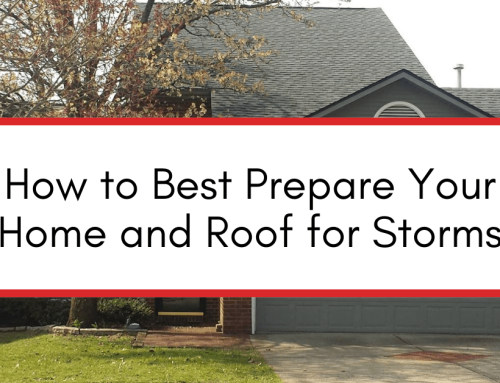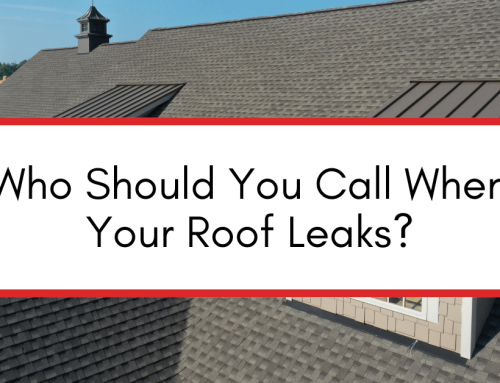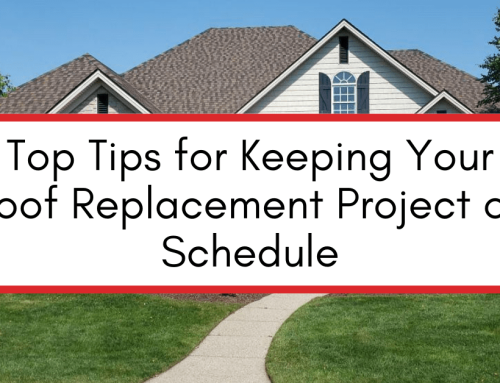Hail damage can wreak havoc on your roof, leading to costly repairs and potential insurance claims. Understanding the impact of hail damage and knowing what your roof warranty covers is essential for homeowners.
Since 2003, AIC Roofing & Construction has helped homeowners across Central and Northern Kentucky make the most of their roof warranties and home insurance coverage. We’ve helped thousands of homeowners navigate their roof issues and we pride ourselves on earnest, honest advice.
In this article, we will explain how hail can damage your roof and how to identify signs of hail damage. We will also delve into the basics of roof warranties, the different types available, and what they typically cover. Additionally, we will discuss the relationship between hail damage and your roof warranty, including whether hail damage is covered, reading the fine print for exclusions and limitations, and filing a warranty claim for hail damage. Finally, we will provide tips for protecting your roof from hail damage, including preventative measures you can take and the importance of regular roof maintenance. Let’s dive in!
How Hail Can Damage Your Roof
Hail can cause significant damage to your roof. When large hailstones impact the roof, they can dislodge or crack shingles, leading to leaks and water infiltration. The force of the impact can also cause cracks or dents in the roofing materials, compromising their structural integrity. Over time, these issues snowball and lead to mold growth or structural decay, if left unaddressed.
Imagine the power behind a hailstone as it hurtles towards your roof. The impact can be forceful enough to break through the protective layers of your roofing materials. Shingles, which are designed to withstand various weather conditions, can be no match for the sheer force of a large hailstone. The impact can dislodge the shingles, leaving gaps and openings for water to seep through. Even smaller hailstones can cause damage by loosening the granules on the shingles, which serve as a protective layer against UV rays and other environmental factors. When these granules are worn away, the underlying layers of the shingles become exposed, making them more susceptible to damage from future storms.
Identifying Signs of Hail Damage
It’s important to know how to identify signs of hail damage on your roof. Look for missing or broken shingles, as well as dents or cracks in the roofing materials. Pay attention to areas where the granules on the shingles have been worn away, as this can expose the underlying layers to potential damage. Additionally, check for signs of leaks inside your home, such as water stains on the ceiling or walls.
Spotting hail damage on your roof can sometimes be challenging, especially if you’re not familiar with what to look for. One way to identify hail damage is by examining the shingles closely. Look for any shingles that appear to be cracked, dented, or have missing pieces. These are clear signs of hail impact. Additionally, check the gutters and downspouts for any granules that may have been washed away by the hail. The presence of granules in the gutters is a strong indication that your roof has suffered hail damage. Inside your home, keep an eye out for any water stains on the ceiling or walls, as these can be signs of leaks caused by hail damage.
The Basics of Roof Warranties
When it comes to protecting your home, one of the most important aspects is the roof. A well-maintained and durable roof not only enhances the aesthetic appeal of your house but also provides shelter and security for you and your family. However, even the best roofs can encounter issues over time, which is why having a roof warranty is crucial.
What is a Roof Warranty?
A roof warranty is a written contract between the homeowner and the roofing manufacturer or contractor. It defines the terms and conditions of the warranty coverage provided for the roofing materials or workmanship. Essentially, it is a guarantee that the roof will perform as expected within a specified period.
Roof warranties can vary in length, ranging from a few years to several decades, depending on the type of warranty and the manufacturer. The longer the warranty, the more peace of mind it provides for homeowners.
Different Types of Roof Warranties
There are various types of roof warranties available, each offering different levels of coverage and protection. Understanding the different types can help you make an informed decision when choosing a warranty for your roof.
Manufacturer warranties, also known as material warranties, cover defects in the roofing materials themselves. These warranties ensure that the materials used in your roof are of high quality and will not fail prematurely. They typically include provisions for replacement or repair of defective materials.
Workmanship warranties, on the other hand, protect against faults in the installation process. These warranties ensure that the roofing contractor has installed the roof according to industry standards and guidelines. If any issues arise due to poor workmanship, the warranty will cover the necessary repairs or replacements.
In some cases, warranties may offer a combination of both material and workmanship coverage. These comprehensive warranties provide homeowners with the highest level of protection, covering both the quality of the materials and the installation process.
What Does a Roof Warranty Cover?
Roof warranties typically cover a range of issues that may arise with your roof. These include manufacturing defects, premature aging, and installation errors that may result in leaks or other roof-related issues. However, it’s important to carefully review the warranty documentation to understand the specific coverage limitations and exclusions.
While roof warranties provide valuable protection, it’s essential to note that they may not cover damage caused by events such as storms, including hail damage. These types of damages are often covered by homeowners’ insurance policies, so it’s crucial to have comprehensive coverage to protect your roof from all potential risks.
Additionally, it’s important to follow the maintenance guidelines provided by the manufacturer or contractor to ensure that your warranty remains valid. Regular inspections, prompt repairs, and proper care can help extend the lifespan of your roof and prevent issues that may not be covered by the warranty.
A roof warranty provides peace of mind and financial protection against unforeseen roof issues. By understanding the different types of warranties and the coverage they offer, you can make an informed decision and ensure that your roof remains in excellent condition for years to come.
Hail Damage and Your Roof Warranty
Does Your Warranty Cover Hail Damage?
The coverage for hail damage varies depending on the type of warranty you have. While some warranties may include hail damage as a covered peril, others may exclude it. It’s crucial to review your warranty documentation or consult with the manufacturer or contractor to determine whether hail damage is covered under your specific warranty.
Hail damage can be a significant concern for homeowners, especially those living in areas prone to severe weather conditions. Hailstones can range in size from small pellets to large chunks of ice, and when they impact your roof, they can cause extensive damage. From cracked shingles to punctured membranes, hail can compromise the integrity of your roof and lead to leaks and other issues.
Understanding whether your warranty covers hail damage is essential for protecting your investment and ensuring that you have the necessary financial support in case of any unfortunate events. It’s always better to be prepared and informed rather than facing unexpected expenses and repairs.
Reading the Fine Print: Exclusions and Limitations
When it comes to roof warranties, it’s vital to read the fine print carefully. Exclusions and limitations may apply, specifying certain circumstances or types of damage that are not covered. Hail damage may be excluded from coverage, especially if it is considered an act of nature or beyond the control of the manufacturer or contractor. Understanding these limitations will help you manage your expectations and plan accordingly.
It’s important to note that even if hail damage is covered under your warranty, there may be specific requirements or conditions that need to be met. For example, some warranties may require regular roof inspections or maintenance to ensure that the roof is in good condition and able to withstand hailstorms. By adhering to these requirements, you can maximize the chances of your warranty covering any potential hail damage.
Additionally, some warranties may have a limited coverage period for hail damage. This means that if your roof sustains hail damage after a certain number of years, the warranty may no longer apply. It’s crucial to be aware of these time limitations and plan accordingly, especially if you live in an area prone to frequent hailstorms.
Filing a Warranty Claim for Hail Damage
If you believe your roof has sustained hail damage and it is covered under your warranty, it’s important to follow the proper procedures for filing a claim. Contact the warranty provider or the authorized representative designated in your warranty documentation to initiate the claims process. Provide them with any necessary documentation, such as photographs or inspection reports, to support your claim. Be prepared for an assessment of the damage and potential repairs or replacements that may be required.
The claims process for hail damage can vary depending on the warranty provider and the specific terms outlined in your warranty. Some warranties may require you to obtain multiple estimates from licensed contractors, while others may have preferred contractors they work with directly. It’s essential to familiarize yourself with the requirements and expectations to ensure a smooth and efficient claims process.
Once your claim has been submitted, the warranty provider will assess the damage and determine the appropriate course of action. This may involve repairs, replacements, or financial compensation, depending on the extent of the damage and the terms of your warranty. It’s important to communicate openly with the warranty provider and ask any questions you may have to ensure a clear understanding of the process and the expected outcome.
Remember, filing a warranty claim for hail damage can be a time-sensitive matter. It’s crucial to act promptly and document the damage as soon as possible after a hailstorm. Delaying the claims process may result in complications or even the denial of your claim, so it’s always best to address the issue promptly and follow the necessary steps to protect your investment.
Protecting Your Roof from Hail Damage
Preventative Measures for Hail Damage
While no roof is completely impervious to hail damage, there are preventative measures you can take to minimize the risk. Consider installing impact-resistant roofing materials that are specifically designed to withstand hail impact. These materials are typically tested and classified based on their resistance to hail damage. Additionally, maintaining adequate attic insulation and ventilation can help minimize the potential for damage by reducing the transfer of heat and minimizing temperature fluctuations on the roof surface.
The Role of Regular Roof Maintenance
Regular roof maintenance plays a crucial role in protecting your roof from hail damage. Inspect your roof periodically for signs of wear and tear, addressing any issues promptly. Clear debris, such as leaves or branches, from the roof surface and gutters regularly to prevent blockages that could contribute to water pooling. Additionally, trim overhanging tree branches to minimize the risk of them falling onto the roof during a hailstorm.
Choosing Hail-Resistant Roofing Materials
When installing a new roof or considering a roof replacement, opting for hail-resistant roofing materials can provide an added layer of protection. These materials are designed and tested to withstand the impact of hailstones without sustaining significant damage. Consult with your roofing professional to explore the different hail-resistant options available and choose the one that best suits your needs and budget.
Roofing Contractors Offer Varying Warranties
AIC Roofing & Construction is part of the elite 2% of roofers in North America to hold the GAF MasterElite Certification. This certification is renewed by us every year as part of our commitment to excellence. Because of our MasterElite Certification, we are able to offer exclusive warranties (like the GAF Golden Pledge Limited Warranty) to our customers – free of charge.
Replacing your roof is an expensive and stressful process. That’s why our team goes above and beyond to take the stress out of the process for you! We’re proud of the stellar reviews and accolades we’ve received.
Contact us today to schedule your free, no-hassle roof inspected by one of the experts at AIC Roofing & Construction.
3-tab attics barns chimney choosing a contractor commercial cost curb appeal DIY estimate financing flashing flat roof GAF glossary gutter replacement gutters gutter size gutter system ice dams inspections insurance missing shingles roof design roofing materials roofing system roof leak roof maintenance roof materials roof repair roof replacement roof shapes roof types shingle ratings shingles siding siding materials siding replacement skylights storm damage underlayment ventilation warranty winter
